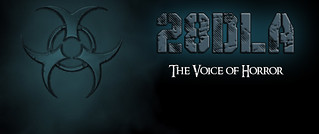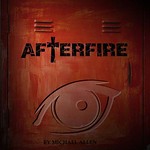Director/writer: James DeMonaco.
Cast: Frank Grillo, Carmen Ejogo, Zach Gilford and Kiele Sanchez.
Director James DeMonaco returns to The Purge (2013) franchise with a chaotic sequel. The Purge: Anarchy is a very anti-American and anti-government film, which images what life would be like without the rule of law. The title's mention of anarchy is a misnomer as the government initiates and controls the violence, against citizens onscreen. Full of social commentaries on race, poverty and government corruption, there is a lot to unpack in this action oriented sequel.
The story's setting is never revealed. But, the film looks very much like Los Angeles, where the film was shot. Here, 12 hours of lawlessness are provided by the government for the citizens. This purging of the sick, the homeless and the poverty-stricken is an attempt to cut through to the chaff. Meanwhile, government officials and the rich elite are running the show and instigating much of the murder. Sergeant (Frank Grillo), a reluctant hero, is tasked with helping a group of innocent people, who are stuck out in the chaos. Sergeant has his own mission to undertake. And, a whole slew of competing motivations threaten to overburden the film's central story.
Is the action depicted in The Purge: Anarchy really anarchy? This viewer would say no. The definition of anarchy is: the absence of government. In the film, government soldiers act as the central villains. They move from house to house kidnapping the innocent residents, so that they can be killed, later. As well, the purge is initiated and organized by the government. The "New Founding Fathers" are the instigators of the violence. As well, high ranking government officials are exempt from the lawlessness. They do not enter the killing grounds, directly. And so, government officials are not on an equal footing with the rest of the citizens. Government is prominent in the film, while true anarchy, or the absence of government is not.
There are two film elements that stood out in this title: the protagonists and the character arc. There is no central protagonist. Though, Sergeant is the quintessential hero. Several protagonists fill the screen. From a single mother and her daughter to a on-again off-again couple, the screen is being shared by multiple personalities. Still, the character and ex-soldier Sergeant, along with Eva (Carmen Ejogo), the mother, are more prominent in the film. This division from one protagonist to many creates for a stronger group of characters. As well, Sergeant's character arc involves violence. He is seeking revenge for the death of his son, but he is also struggling with his own want for revenge. This characters is influenced by the many other characters in his group and it is interesting to watch Sergeant confront his own inner pain, while searching for a meaningful answer to the death of this son. These two film elements helped strengthen the film's central storyline, which is well focused.
The film makes a social commentary on a number of themes, including: race, economic class and government corruption. On race, many of the rich elites depicted in the film are of a caucasian background. The whiteness of the characters is amplified by some of the bright lighting, making these characters almost sparkle. Their victims are often African-American. Or, African-Americans work for the elites as proxies. For example, African-Americans kidnap people off the street for the upper class. On the other hand, African-Americans sometimes look like a new Black Panther party. Their fedoras and guns promise revolution, in an almost comedic fashion. Neither race comes out looking very good in this film. In regards to economic class, the poor and homeless are the first to be victimized. A string of bedraggled bodies will show what can happen to the most vulnerable. Those in the middle-class and living in tenaments do not fare much better. Armed government forces torment those inside. It is only the rich upper-class who seem to be doing well. They purge behind closed doors or partake in controlled deathmatches. The rich, in The Purge: Anarchy, are consistently depicted as villains. Finally, DeMonaco, in his script, highlights potential real world government corruption and totalitarianism. There is a great line near the end of the film, when a blackhat states: "citizens are purging less." Therefore, the government must instigate the purge, because citizens want peace. But, governments rarely want peace in real life nor in DeMonaco's latest film. Many conflicts, involving a range of themes, are brought to the screen in this thought provoking film.
The Purge: Anarchy is one of the better summer films to come out this year. This smaller film ($9 million budget) includes a well focused story, which is full of interesting characters and intriguing sideplots. Action elements are often over-the-top, including the use of flamethrowers and underground street chases. Social commentaries infiltrate the writing. This reviewer enjoyed all of the chaos onscreen. The Purge: Anarchy is not 12 hours long, but its ninety minute runtime is consistently exciting and entertaining.
Overall: 7.25 out of 10.
*only one question remains: what would a third film involve?
The film's official trailer is hosted here:
The Purge: Anarchy Trailer on 28DLA
Subscribe to 28 Days Later: An Analysis Email Subscription
Cast: Frank Grillo, Carmen Ejogo, Zach Gilford and Kiele Sanchez.
Director James DeMonaco returns to The Purge (2013) franchise with a chaotic sequel. The Purge: Anarchy is a very anti-American and anti-government film, which images what life would be like without the rule of law. The title's mention of anarchy is a misnomer as the government initiates and controls the violence, against citizens onscreen. Full of social commentaries on race, poverty and government corruption, there is a lot to unpack in this action oriented sequel.
The story's setting is never revealed. But, the film looks very much like Los Angeles, where the film was shot. Here, 12 hours of lawlessness are provided by the government for the citizens. This purging of the sick, the homeless and the poverty-stricken is an attempt to cut through to the chaff. Meanwhile, government officials and the rich elite are running the show and instigating much of the murder. Sergeant (Frank Grillo), a reluctant hero, is tasked with helping a group of innocent people, who are stuck out in the chaos. Sergeant has his own mission to undertake. And, a whole slew of competing motivations threaten to overburden the film's central story.
Is the action depicted in The Purge: Anarchy really anarchy? This viewer would say no. The definition of anarchy is: the absence of government. In the film, government soldiers act as the central villains. They move from house to house kidnapping the innocent residents, so that they can be killed, later. As well, the purge is initiated and organized by the government. The "New Founding Fathers" are the instigators of the violence. As well, high ranking government officials are exempt from the lawlessness. They do not enter the killing grounds, directly. And so, government officials are not on an equal footing with the rest of the citizens. Government is prominent in the film, while true anarchy, or the absence of government is not.
There are two film elements that stood out in this title: the protagonists and the character arc. There is no central protagonist. Though, Sergeant is the quintessential hero. Several protagonists fill the screen. From a single mother and her daughter to a on-again off-again couple, the screen is being shared by multiple personalities. Still, the character and ex-soldier Sergeant, along with Eva (Carmen Ejogo), the mother, are more prominent in the film. This division from one protagonist to many creates for a stronger group of characters. As well, Sergeant's character arc involves violence. He is seeking revenge for the death of his son, but he is also struggling with his own want for revenge. This characters is influenced by the many other characters in his group and it is interesting to watch Sergeant confront his own inner pain, while searching for a meaningful answer to the death of this son. These two film elements helped strengthen the film's central storyline, which is well focused.
The film makes a social commentary on a number of themes, including: race, economic class and government corruption. On race, many of the rich elites depicted in the film are of a caucasian background. The whiteness of the characters is amplified by some of the bright lighting, making these characters almost sparkle. Their victims are often African-American. Or, African-Americans work for the elites as proxies. For example, African-Americans kidnap people off the street for the upper class. On the other hand, African-Americans sometimes look like a new Black Panther party. Their fedoras and guns promise revolution, in an almost comedic fashion. Neither race comes out looking very good in this film. In regards to economic class, the poor and homeless are the first to be victimized. A string of bedraggled bodies will show what can happen to the most vulnerable. Those in the middle-class and living in tenaments do not fare much better. Armed government forces torment those inside. It is only the rich upper-class who seem to be doing well. They purge behind closed doors or partake in controlled deathmatches. The rich, in The Purge: Anarchy, are consistently depicted as villains. Finally, DeMonaco, in his script, highlights potential real world government corruption and totalitarianism. There is a great line near the end of the film, when a blackhat states: "citizens are purging less." Therefore, the government must instigate the purge, because citizens want peace. But, governments rarely want peace in real life nor in DeMonaco's latest film. Many conflicts, involving a range of themes, are brought to the screen in this thought provoking film.
The Purge: Anarchy is one of the better summer films to come out this year. This smaller film ($9 million budget) includes a well focused story, which is full of interesting characters and intriguing sideplots. Action elements are often over-the-top, including the use of flamethrowers and underground street chases. Social commentaries infiltrate the writing. This reviewer enjoyed all of the chaos onscreen. The Purge: Anarchy is not 12 hours long, but its ninety minute runtime is consistently exciting and entertaining.
Overall: 7.25 out of 10.
*only one question remains: what would a third film involve?
The film's official trailer is hosted here:
The Purge: Anarchy Trailer on 28DLA
Subscribe to 28 Days Later: An Analysis Email Subscription


 Sunday, July 20, 2014
Sunday, July 20, 2014
 Michael Allen
Michael Allen




 Posted in:
Posted in: 


0 comments:
Post a Comment